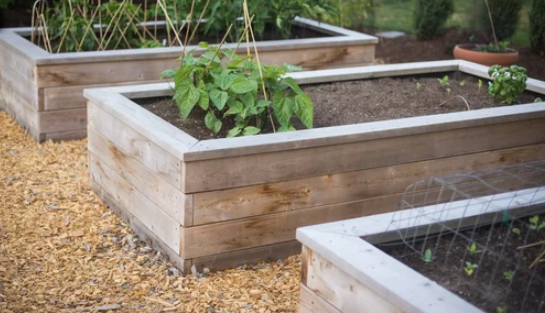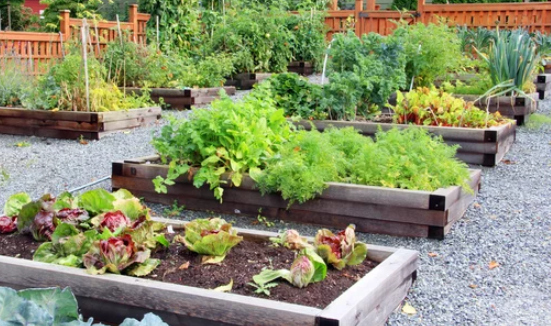Home gardening has experienced a remarkable resurgence in recent years, with an increasing number of individuals seeking fresh, organic produce straight from their own backyard.
Gardening boxes have emerged as a popular choice for vegetable cultivation.
These versatile containers offer numerous advantages that contribute to successful and rewarding gardening experiences.
In this blog post, we will delve into the world of gardening boxes and explore the benefits they provide for growing vegetables.
Gardening boxes, also known as raised beds, containers, or vertical gardens, are designed to create a controlled environment for plants to thrive.
Whether you have limited space or prefer a more organized and manageable gardening approach, gardening boxes offer a practical solution.
Let’s uncover the advantages of using gardening boxes and discover how they can enhance your vegetable gardening endeavors.
Advantages of Gardening Boxes for Growing Vegetables:

Gardening Boxes For Vegetables
Optimal Soil Conditions:
One of the primary benefits of gardening boxes is the ability to create and maintain optimal soil conditions for vegetable growth.
Unlike traditional gardens, where soil quality may vary, gardening boxes allow for better control and amendment of the soil. You have the freedom to customize the soil composition based on the specific requirements of different vegetables.
By ensuring a well-balanced and nutrient-rich soil, you provide an ideal foundation for healthy plant growth and abundant harvests.
Weed and Pest Control:
Gardening boxes provide an effective solution for minimizing weed growth and controlling pests.
The confined space of gardening boxes makes it easier to spot and remove weeds before they take hold and compete with your vegetables for nutrients and water.
Additionally, the controlled environment of gardening boxes helps prevent pests and diseases from infiltrating your plants.
So if you keep your vegetables off the ground and employ protective measures such as companion planting or natural pest deterrents, you can reduce the need for chemical pesticides and create a more environmentally friendly garden.
Improved Drainage and Water Management:
Proper drainage is crucial for the health of vegetable plants, as excess water can lead to root rot and other water-related issues.
Gardening boxes offer excellent drainage due to their raised structure and the use of well-draining soil mixes.
This ensures that water flows freely through the soil, preventing waterlogging and allowing oxygen to reach the roots.
Moreover, gardening boxes allow for better water management, as you have more control over the watering process.
This control minimizes water wastage and ensures that your vegetables receive the appropriate amount of moisture for optimal growth.
Accessibility and Ergonomics:
Gardening boxes are a game-changer when it comes to accessibility and ergonomics.
So, by elevating the gardening space, these boxes eliminate the need for bending and kneeling, making it easier and more comfortable to tend to your plants.
This is especially beneficial for individuals with mobility issues or those who prefer a more ergonomic gardening experience.
Gardening boxes can be placed on decks, patios, or even rooftops, allowing anyone, regardless of the available space, to enjoy the joys of vegetable gardening.
Choosing the Right Gardening Boxes:

A. Size and Depth: When selecting gardening boxes, consider the size and depth that best suit your needs and the types of vegetables you want to grow.
Different vegetables have varying root depths and spacing requirements.
Deep-rooted plants like tomatoes or carrots may require deeper boxes, while shallow-rooted herbs can thrive in shallower ones.
Take into account the mature size of the plants and provide enough space for them to grow and spread their roots comfortably.
Material Selection:
Gardening boxes are available in a variety of materials, including wood, plastic, and metal. Each material has its own set of pros and cons.
Wooden boxes provide a natural aesthetic and good insulation but may require periodic maintenance.
Plastic boxes are lightweight, durable, and often cost-effective but can lack breathability. Metal boxes offer durability and a modern look, but they may heat up quickly in sunny weather.
Also, consider factors such as durability, aesthetics, sustainability, and your personal preferences when choosing the material for your gardening boxes.
Location and Sunlight:
The location of your gardening boxes is crucial for the success of your vegetable garden.
Most vegetables require ample sunlight to thrive, so choose a location that receives at least 6-8 hours of direct sunlight each day.
Consider the orientation of your space and any potential shading from nearby structures or trees.
If your chosen location lacks sufficient sunlight, consider using portable gardening boxes that can be moved around to capture the best light conditions.
Maintaining and Caring for Gardening Boxes:

Watering and Fertilizing:
Regular watering and appropriate fertilization are essential for the health and productivity of your vegetable plants.
As gardening boxes offer excellent drainage, it is important to monitor the moisture levels and water accordingly. Avoid overwatering, as excess moisture can lead to root rot.
Fertilize your plants with organic, slow-release fertilizers or compost to provide them with a steady supply of nutrients throughout the growing season.
Crop Rotation and Succession Planting:
To maintain soil health and prevent the buildup of pests and diseases, practice crop rotation in your gardening boxes.
Rotate your vegetables annually, ensuring that plants from the same family are not grown in the same spot year after year.
This helps break the pest and disease cycles, promotes nutrient balance, and maximizes yields. Additionally, implement succession planting to make the most of your gardening space.
Once a crop is harvested, replant with a new vegetable to ensure a continuous harvest throughout the growing season.
Pruning and Trellising:
For vine vegetables like cucumbers, beans, or peas, pruning and trellising are essential for maximizing space and productivity.
Install trellises or stakes in your gardening boxes to support the climbing plants and train them to grow vertically.
Regularly prune and remove any dead or damaged plant parts to promote airflow and reduce the risk of diseases.
Conclusion
Gardening boxes offer a myriad of benefits for growing vegetables, making them an ideal choice for home gardeners.
With optimal soil conditions, weed and pest control, improved drainage and water management, and enhanced accessibility, these boxes provide an efficient and rewarding gardening experience.
Nonetheless, by carefully selecting the right gardening boxes, paying attention to size, material, and location, and maintaining them properly through watering, fertilizing, and practicing crop rotation, you can create a thriving vegetable garden that yields bountiful harvests.
So, embrace the world of gardening boxes and embark on a journey of sustainable and enjoyable vegetable gardening right in your own backyard.




